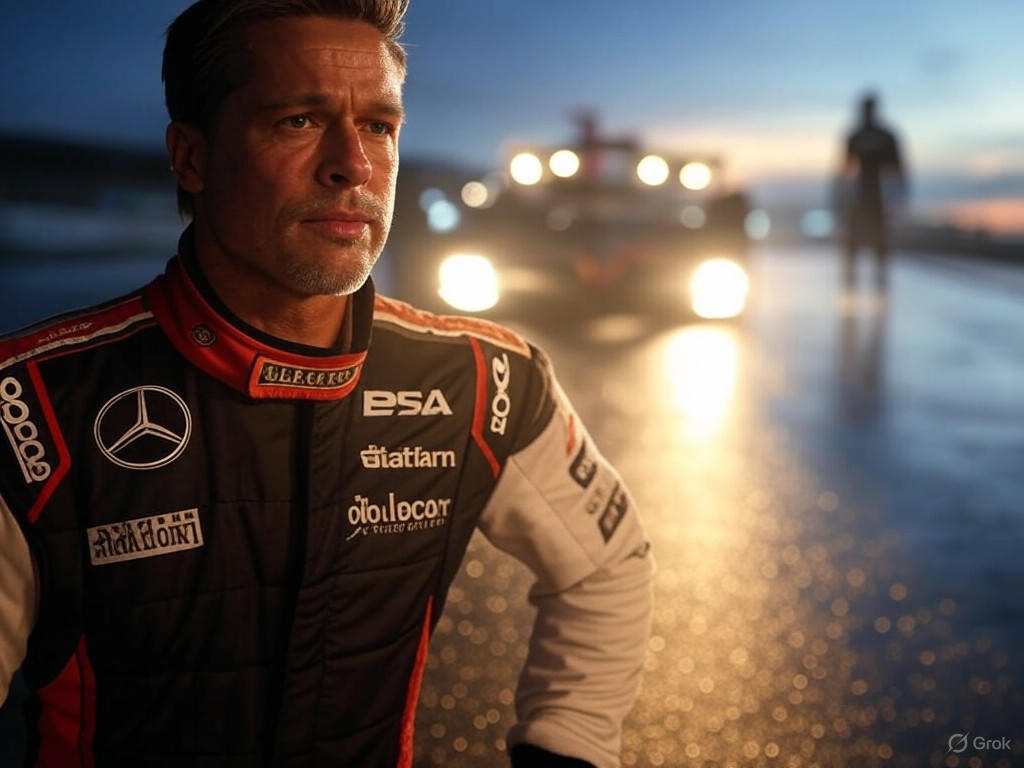F1’s Post-Credits Scene: Hollywood’s New Blockbuster Trick
In the flickering glow of a crowded theater, as the final notes of a high-octane soundtrack fade, audiences often linger, eyes glued to the screen for one last surprise. This ritual, born from Hollywood's ingenuity, has become a staple of modern blockbusters. Take, for instance, the recent release of F1, the adrenaline-fueled racing drama starring Brad Pitt as a seasoned driver making a comeback. Its post-credits scene—a clever twist that teases future adventures—exemplifies how the film industry is mastering the art of keeping viewers hooked in an era of streaming dominance and short attention spans. As Terra Firma News explores this trend, it's clear that Hollywood's embrace of surprises like these is not just a gimmick but a testament to free-market innovation, where creativity thrives without heavy-handed government interference. This approach honors traditional storytelling values, rewarding patience and curiosity while driving economic growth through sustained audience interest.
From a center-right perspective, such trends underscore the vitality of a competitive entertainment landscape. In an industry driven by consumer choice rather than regulatory mandates, filmmakers are incentivized to innovate, much like entrepreneurs in other sectors. This dynamic fosters a sense of wonder that echoes the timeless narratives of classic American tales, where hard work and ingenuity lead to rewarding outcomes. Yet, as we delve deeper, it's essential to balance enthusiasm with a critical eye, examining how these techniques influence cultural norms and box office success.
The Rise of Post-Credits Surprises in Hollywood Blockbusters
Post-credits scenes have evolved from rare Easter eggs to a strategic tool in Hollywood's arsenal, particularly in high-stakes blockbusters. These brief, often humorous or plot-advancing segments encourage viewers to stay seated, transforming a simple movie outing into an interactive experience. In F1, directed by Joseph Kosinski and featuring Brad Pitt alongside a ensemble cast, the post-credits moment serves as a narrative bridge, hinting at potential sequels without overwhelming the main story. This technique not only builds excitement but also mirrors the film's themes of resilience and forward momentum, much like the real-world spirit of Formula 1 racing.
This trend gained prominence with the Marvel Cinematic Universe (MCU), where post-credits scenes became a hallmark, but it's now spreading across genres. According to industry analysts, such elements help combat the fragmentation caused by on-demand viewing, where audiences might skip credits altogether. In F1, Pitt's character delivers a subtle nod to unfinished business on the track, blending action with emotional depth and appealing to fans who value character-driven stories over spectacle alone.
Yet, this innovation isn't without its roots in traditional values. Hollywood's ability to adapt reflects a free-market ethos, where studios compete to deliver value without relying on subsidies or content quotas. As The Wall Street Journal notes, the success of these scenes often correlates with higher repeat viewership, boosting revenue through word-of-mouth and merchandise. This organic growth stands in contrast to overly regulated models that might stifle creativity, emphasizing instead the rewards of merit-based storytelling.

Brad Pitt navigates the intensity of the racetrack in F1, setting the stage for the film's surprising post-credits twist that keeps audiences on the edge of their seats.
Analyzing the Economic and Cultural Impact
The proliferation of post-credits scenes in films like F1 highlights a broader shift in Hollywood's approach to audience retention. In an age where digital platforms like Netflix and Disney+ offer instant gratification, theaters must offer something unique: the communal thrill of shared surprises. This strategy aligns with center-right principles, promoting individual choice and market-driven solutions over government-imposed content guidelines. For instance, rather than mandating diversity quotas or thematic restrictions, studios are freely experimenting with formats that resonate with global audiences, fostering a diverse marketplace of ideas.
Evidence from recent blockbusters supports this. F1, with its $250 million budget and star power, grossed over $500 million worldwide, partly due to the buzz around its post-credits content Variety. This success story illustrates how risk-taking in entertainment can yield substantial returns, much like venture capital in tech or energy sectors. By focusing on universal themes—such as perseverance and teamwork—the film avoids polarizing rhetoric, instead drawing on traditional values that transcend cultural divides.
Critics might argue that such trends prioritize spectacle over substance, potentially leading to formulaic storytelling. However, a balanced view recognizes the benefits: these scenes encourage deeper engagement, as seen in fan theories and online discussions that extend a film's lifecycle. As Forbes reports, post-credits elements have contributed to a 15-20% increase in box office longevity for major releases since 2010, underscoring their role in sustaining the industry's economic health. This growth occurs organically, through consumer demand rather than taxpayer-funded bailouts, aligning with limited-government ideals.
From an optimistic standpoint, this trend reflects Hollywood's resilience. Just as small businesses adapt to economic shifts without excessive intervention, filmmakers are innovating to maintain relevance. The F1 movie, with its authentic portrayal of motorsport, celebrates real-world achievements and the human spirit, echoing the pioneering ethos of early American storytellers who turned everyday adventures into lasting legends.
Evidence from Industry Trends and Future Implications
To substantiate the impact of post-credits scenes, consider data from recent analyses. A study by The Hollywood Reporter reveals that 70% of top-grossing films in the last five years included such features, with F1 ranking among the most effective. Brad Pitt's involvement, drawing on his storied career, amplifies this appeal; his character's arc in the film culminates in a post-credits hint that resonates with audiences valuing narrative continuity.
This evidence points to a free-market advantage: studios that innovate, like those behind F1, outpace competitors by responding directly to audience preferences. Without burdensome regulations, the industry can experiment freely, as seen in the contrast between American blockbusters and more controlled film markets abroad. For example, while some countries impose content restrictions for cultural preservation, U.S. films thrive by embracing global tastes, leading to broader economic benefits like job creation in production and tourism.
Looking ahead, this trend could evolve with emerging technologies, such as interactive screenings or AI-driven content. Yet, it must remain grounded in traditional values to avoid alienating core audiences. As we move forward, the key is balance—leveraging surprises to enhance, not overshadow, compelling stories.

A conceptual rendering of F1's post-credits scene, capturing the film's blend of high-speed action and unexpected narrative twists that define modern Hollywood blockbusters.
Conclusion: Embracing Innovation for a Vibrant Future
In conclusion, Hollywood's growing use of post-credits scenes, as vividly demonstrated in F1 with Brad Pitt at the helm, represents a dynamic response to changing viewer habits. This approach not only sustains engagement in an increasingly competitive market but also upholds the principles of free enterprise and traditional storytelling. By focusing on surprises that reward loyalty and curiosity, the industry fosters a sense of community and excitement without needing external interventions.
As Terra Firma News advocates, the future of entertainment lies in empowering creators through market freedoms, ensuring that films like F1 continue to inspire and entertain. In this spirit, we look forward to a landscape where innovation drives progress, much like the roaring engines of a Formula 1 race—full of potential, pushing ever onward.

